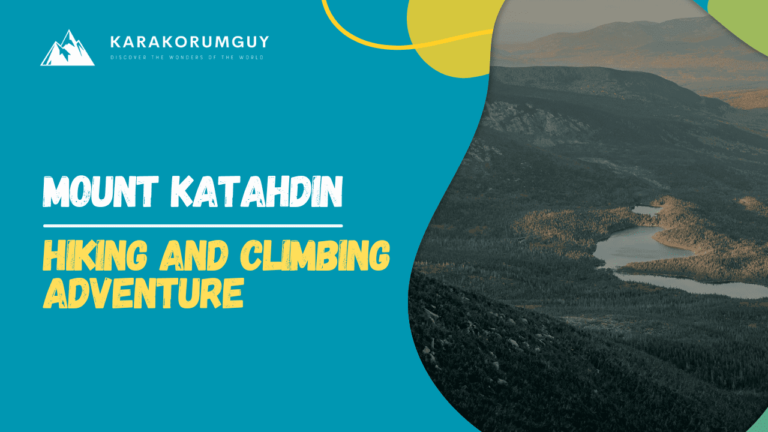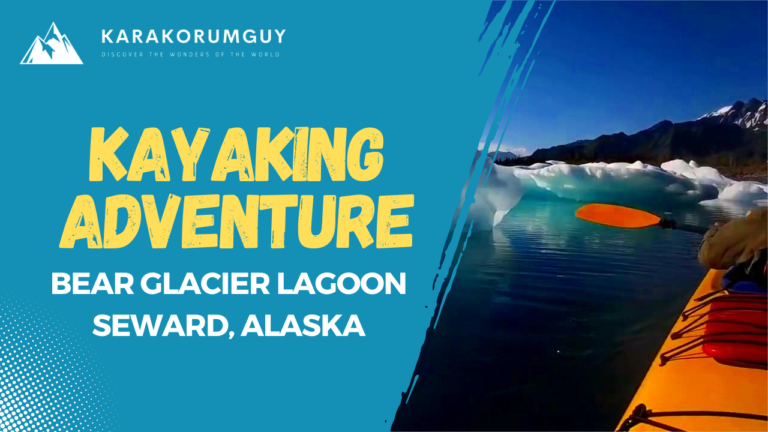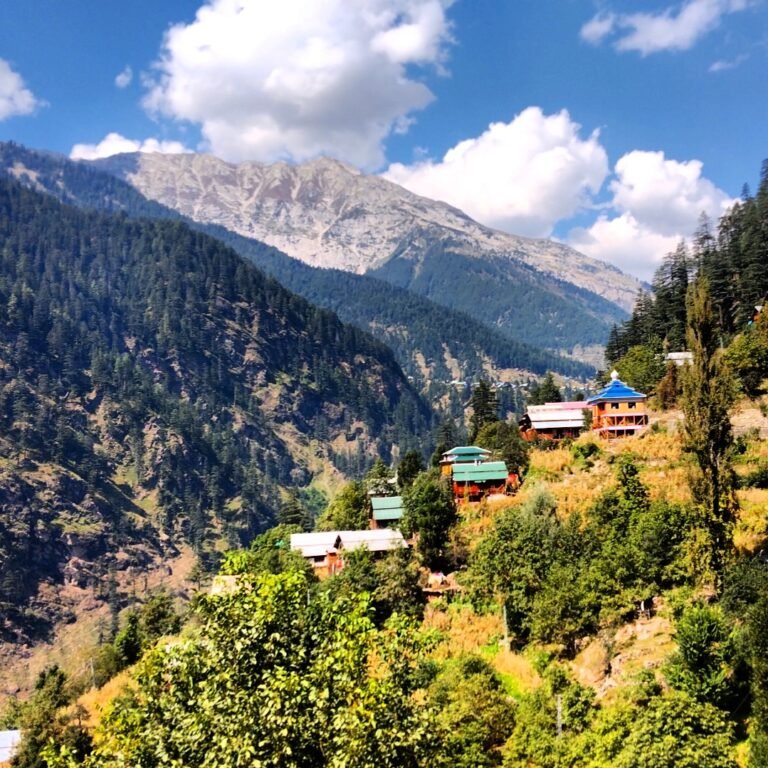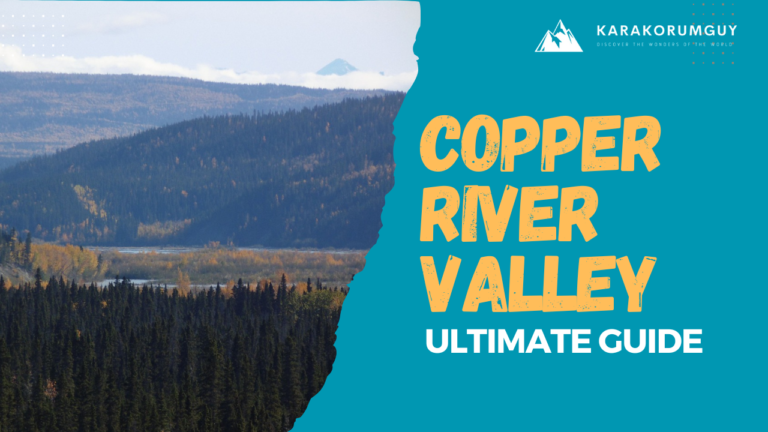Annapurna: 10th Highest Mountain in the World

Annapurna is a series of peaks in the Himalayas, forming a massif that spans approximately 55 kilometers (34 miles) in length. It is home to some of the world’s highest peaks, including Annapurna I, which stands at an elevation of 8,091 meters (26,545 feet) above sea level. The name “Annapurna” comes from Sanskrit. “Anna” means food or grains, and “Purna” means full or complete. This name shows how the mountains give us plenty of food and make us feel full.
So, in this article, we’re going to take a close look at Annapurna, which has the world’s 10th highest mountain peak (Annapurna I). Let’s dive deep into all the interesting details about it:
Annapurna: The Deadly Mountain
It is called the “Killer Mountain” because it’s very dangerous for climbers. It’s one of the world’s most dangerous peaks to climb, with a high fatality rate. Lots of people have died trying to climb it. The mountain has avalanches, unpredictable weather, steep slopes, and other tough problems that make it hard to climb safely. Because of all these dangers, people call it the “Killer Mountain”.
Deadly 2014 Snowstorm on Annapurna
The 2014 incident on Annapurna involved a severe snowstorm that trapped numerous climbers on the mountain. At least 39 people, including climbers and guides, lost their lives, making it one of the deadliest mountaineering disasters in its history. The storm caught climbers off guard, leading to avalanches, falls, and exposure to extreme conditions. The harsh weather further hampered rescue efforts, contributing to the tragic outcome.
Major Climbs and Milestones in Annapurna’s History
Annapurna, the majestic peak in the Himalayas, has a rich history filled with major climbs and milestones. Here are some significant events:
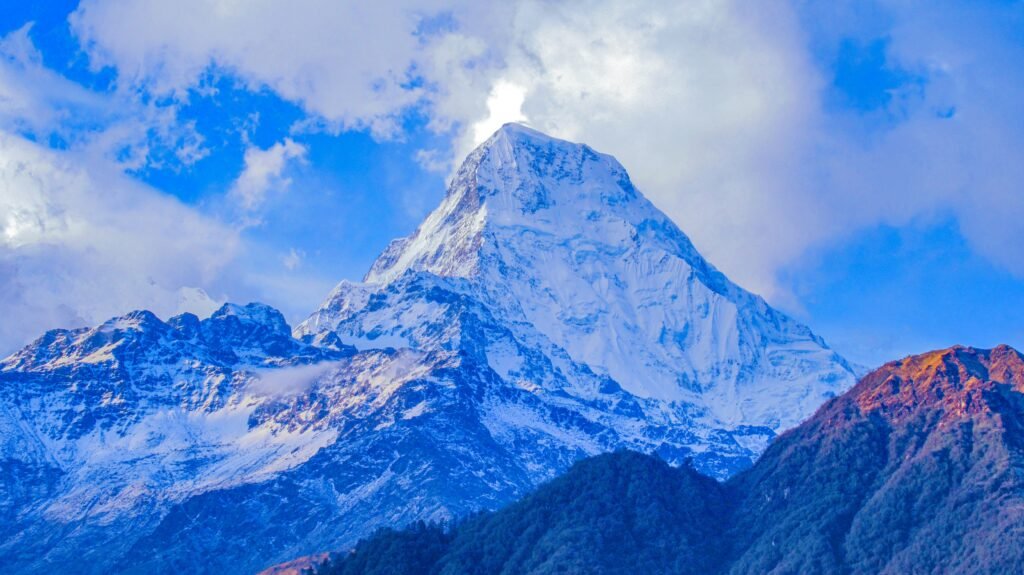
1. First Ascent:
Annapurna was the first of the 8,000-meter peaks to be climbed. French climbers Maurice Herzog and Louis Lachenal reached the summit on June 3, 1950. Their successful ascent marked a monumental achievement in the history of mountaineering.
2. Annapurna South Face:
The South Face of Annapurna remained one of the last great challenges in Himalayan climbing. In 1970, a British expedition led by Sir Chris Bonington successfully climbed this daunting route, establishing a new milestone in mountaineering history.
3. First Winter Ascent:
Jerzy Kukuczka and Artur Hajzer from Poland accomplished the first winter ascent of Annapurna on February 3, 1987. This achievement demonstrated the immense skill and determination required to conquer such a formidable peak in harsh winter conditions.
4. Women’s Ascents:
Annapurna has seen several notable ascents by women, including Wanda Rutkiewicz from Poland, who became the first woman to reach the summit in 1978. French climber Élisabeth Revol made a remarkable solo ascent of the peak in 2018, underlining the increasing participation and achievements of women in high-altitude mountaineering.
5. Tragic Incidents:
Annapurna is also known for its dangers, with numerous tragic incidents occurring throughout its climbing history. The mountain has a high fatality rate, earning it the nickname “the killer mountain.” Notable incidents include the 1997 South Korean expedition tragedy and the 2014 avalanche that claimed the lives of 16 Sherpas.
6. Speed Records:
In recent years, there have been attempts to set speed records on Annapurna. In 2013, Ueli Steck, a Swiss climber, set a remarkable speed record for the fastest ascent of the peak via the South Face, completing the climb in just 28 hours.
These climbs and milestones in Annapurna’s history highlight the triumphs and challenges faced by mountaineers in their quest to conquer one of the world’s most formidable peaks.
Main Peaks of Annapurna
Annapurna, a majestic massif in the Himalayas, is renowned for its towering peaks and breathtaking landscapes. Among its numerous peaks, five stand out as the main attractions for climbers, trekkers, and adventurers alike. Let’s delve into the splendor of these peaks and explore the allure they hold.
1. Annapurna I: The Main Peak
- Location and Height
- Annapurna I, standing at 8,091 meters (26,545 feet), is the crown jewel of the Annapurna Massif. Located in north-central Nepal, it dominates the skyline with its sheer magnitude and grandeur. It is ranked as the 10th highest mountain peak in the world.
- Climbing History and Challenges
- The history of climbing Annapurna I is fraught with challenges and triumphs. Despite being the first 8,000-meter peak ever climbed, it also holds the grim distinction of having the highest fatality rate among the fourteen 8,000-meter peaks. Its treacherous slopes and unpredictable weather make it a daunting yet irresistible challenge for mountaineers.
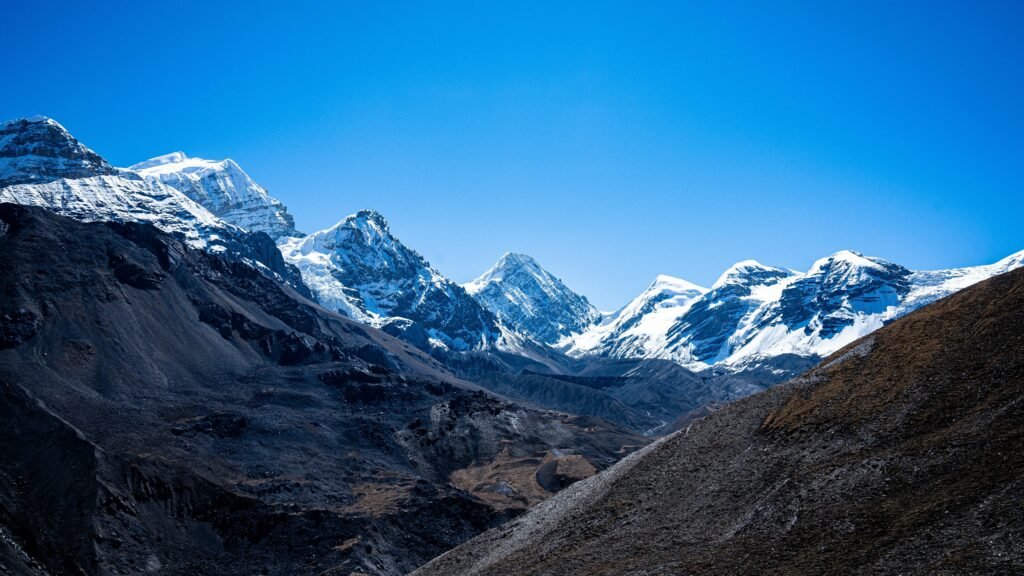
2. Annapurna II: The Eastern Peak
- Features and Characteristics
- Annapurna II, at 7,937 meters (26,040 feet), stands as the eastern anchor of the Annapurna Massif. While not as tall as its neighboring peaks, its striking beauty and technical climbing routes attract adventurers from around the globe.
- Climbing Routes and Difficulties
- The climbing routes on Annapurna II pose significant challenges, requiring advanced mountaineering skills and experience. Steep ice faces, crevasses, and avalanches are common hazards that climbers must navigate with precision and caution.
3. Annapurna III: The Western Peak
- Geographical Information
- Annapurna III, with an elevation of 7,555 meters (24,787 feet), is located to the west of Annapurna I. Its pyramid-shaped summit and rugged terrain make it a striking sight for trekkers and climbers alike.
- Mountaineering Significance
- While not as frequently climbed as its taller counterparts, Annapurna III presents its own set of challenges and rewards for those who dare to venture onto its slopes. Technical expertise and careful planning are essential for a successful ascent.
4. Annapurna IV: The Northern Peak
- Terrain and Elevation
- Annapurna IV rises to an altitude of 7,525 meters (24,688 feet) in the northern reaches of the massif. Its remote location and challenging terrain make it a less frequented destination for climbers, offering a sense of solitude and adventure.
- Expeditions and Exploration
- Expeditions to Annapurna IV are characterized by rugged wilderness and alpine beauty. Limited information and infrastructure add to the allure of exploring this lesser-known peak, attracting seasoned adventurers seeking new challenges.
5. Annapurna South: The Southern Peak
- Landscape and Surroundings
- Annapurna South, standing at 7,219 meters (23,684 feet), graces the southern skyline of the massif. Its proximity to popular trekking routes makes it a prominent landmark for trekkers on the Annapurna Circuit Trek.
Unveiling the Best Trekking and Climbing Routes
Trekking Opportunities
While not as technically challenging as its higher counterparts, trekking around Annapurna South offers breathtaking views of the surrounding peaks and valleys. The Annapurna Sanctuary trek provides a close-up encounter with this majestic peak, along with cultural immersion in local villages.
Choosing the Right Trekking Route
Selecting the perfect trekking route is crucial to ensure an enjoyable and fulfilling journey. Factors such as duration, difficulty, and personal preferences play a significant role in determining the most suitable route for each trekker.
Among the plethora of options, three routes stand out as the most popular choices for trekkers: the Annapurna Circuit, Annapurna Base Camp Trek, Tilicho Lake Trek, Mardi Himal Trek, and Ghorepani Poon Hill Trek. Each route offers its own set of attractions and challenges, catering to a wide range of preferences and fitness levels.
1. Annapurna Circuit Trek
The Annapurna Circuit Trek is one of the most renowned trekking routes in the world, offering a diverse range of landscapes and cultural experiences. Spanning over 160-230 kilometers (depending on the exact route), this trek takes you through lush forests, charming villages, alpine meadows, and high mountain passes.
Overview: It typically takes around 15-20 days to complete, starting from Besisahar and ending in Pokhara. It’s known for its spectacular views of Annapurna, Dhaulagiri, Machhapuchhre, and other towering peaks.
Highlights: Some of the highlights of the Annapurna Circuit Trek include crossing the Thorong La Pass (5,416 meters), exploring the picturesque villages of Manang and Marpha, soaking in natural hot springs at Tatopani, and witnessing the diverse flora and fauna of the Annapurna Conservation Area.
Difficulty Level: The Annapurna Circuit Trek is considered moderately difficult, suitable for trekkers with a good level of fitness and some prior trekking experience. The high altitude and long duration of the trek can pose challenges, but proper acclimatization and preparation can help mitigate risks.
Best Time to Go: The best time to embark on the Annapurna Circuit Trek is during the spring (March to May) and autumn (September to November) seasons when the weather is stable, and the views are clear.

2. Annapurna Base Camp Trek
The Annapurna Base Camp Trek, also known as the ABC Trek, is another popular trekking route that offers stunning views of the Annapurna massif and surrounding peaks.
Overview: This trek typically takes 7-12 days to complete, starting from Nayapul and culminating at the base camp of Annapurna I (8,091 meters). The trail takes you through dense rhododendron forests, terraced farmlands, and charming Gurung villages.
Highlights: The highlights of the Annapurna Base Camp Trek include panoramic views of Annapurna, Machhapuchhre, and Hiunchuli peaks, as well as the opportunity to interact with local communities and learn about their culture and traditions.
Difficulty Level: The Annapurna Base Camp Trek is considered moderately easy, suitable for novice trekkers and families. The trail is well-marked, and the altitude gain is gradual, allowing for a comfortable trekking experience.
Best Time to Go: The best time to undertake the Annapurna Base Camp Trek is during the spring and autumn seasons for favorable weather conditions and clear mountain views.

3. Tilicho Lake Trek
The Tilicho Lake Trek is a lesser-known but equally rewarding trekking route in the Annapurna region, leading to one of the highest lakes in the world, Tilicho Lake (4,919 meters).
Overview: This trek typically takes 8-12 days to complete, starting from Syange or Chame and ascending to the pristine shores of Tilicho Lake. The trail offers stunning views of the Annapurna and Manaslu ranges, as well as diverse landscapes ranging from subtropical forests to barren highlands.
Highlights: The highlights of the Tilicho Lake Trek include crossing the challenging Mesokanto La Pass (5,099 meters), camping by the tranquil shores of Tilicho Lake, and witnessing the dramatic scenery of the surrounding peaks, including Tilicho Peak (7,134 meters).
Difficulty Level: The Tilicho Lake Trek is considered moderately difficult, with steep ascents and rough terrain in certain sections. Trekkers should be prepared for altitude-related challenges and unpredictable weather conditions.
Best Time to Go: The best time to undertake the Tilicho Lake Trek is during the spring and autumn seasons, similar to other treks in the Annapurna region, to enjoy pleasant weather and clear views.
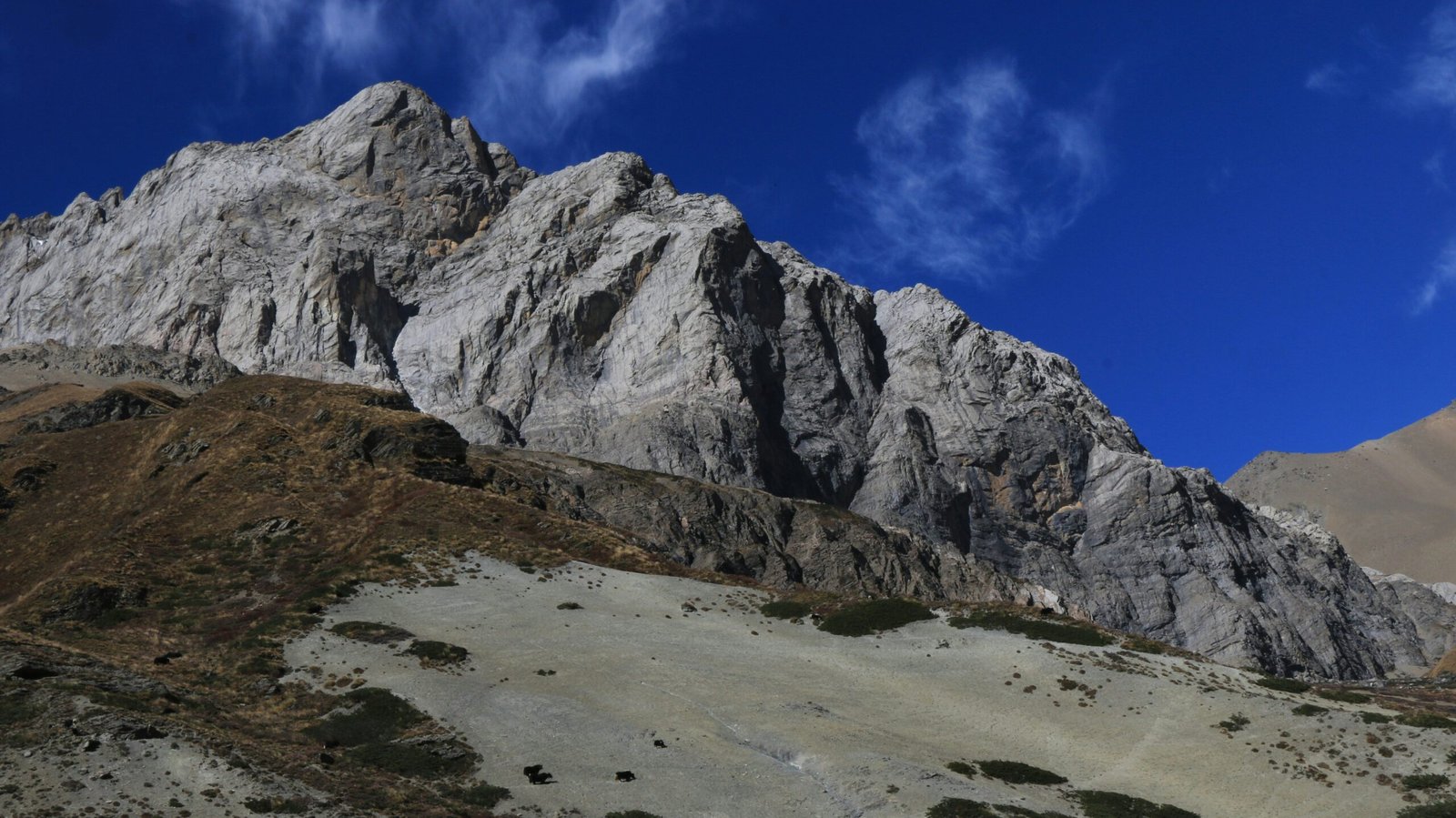
4. Mardi Himal Trek
The Mardi Himal Trek is a relatively new trekking route that offers breathtaking views of the Annapurna massif, including Machhapuchhre (Fishtail) peak.
Overview: This trek typically takes 5-7 days to complete, starting from Kande or Phedi and ascending to the base camp of Mardi Himal (5,587 meters). The trail takes you through rhododendron forests, alpine pastures, and traditional villages, providing a mix of natural beauty and cultural immersion.
Highlights :The highlights of the Mardi Himal Trek include panoramic views of Machhapuchhre and Annapurna ranges, close encounters with local flora and fauna, and the opportunity to explore off-the-beaten-path trails away from the crowds.
Difficulty Level :The Mardi Himal Trek is considered moderately challenging, suitable for trekkers with some prior experience in high-altitude trekking. While the trail is relatively less crowded compared to other popular routes, it still requires physical fitness and endurance.
Best Time to Go: The best time to undertake the Mardi Himal Trek is during the spring and autumn seasons for pleasant weather and clear mountain views.

5. Poon Hill Trek
The Poon Hill Trek is a short but rewarding trekking route that offers stunning sunrise views over the Annapurna and Dhaulagiri ranges.
Overview: This trek typically takes 3-5 days to complete, making it ideal for those with limited time or seeking a relatively easier trekking experience. Starting from Nayapul or Hile, the trail ascends through lush rhododendron forests and traditional Magar and Gurung villages before reaching the famed Poon Hill viewpoint.
Highlights: The highlights of the Poon Hill Trek include witnessing the spectacular sunrise over the Himalayas from Poon Hill (3,210 meters), panoramic views of Annapurna and Dhaulagiri ranges, and exploring the charming villages of Ghorepani and Ghandruk.
Difficulty Level: The Poon Hill Trek is considered easy to moderate, suitable for beginners and families with children. The trail is well-marked, and the altitude gain is gradual, allowing for a comfortable trekking experience without the challenges of high altitude.
Best Time to Go: The best time to undertake the Poon Hill Trek is during the spring and autumn seasons when the weather is mild, and the skies are clear, offering optimal conditions for enjoying the mountain views and sunrise from Poon Hill.

Some Essential Safety Tips for Travelers
Ensuring safety is paramount when embarking on a journey to the Annapurna region, especially considering the rugged terrain and high altitudes. Here are some essential safety tips for travelers exploring Annapurna:
1. Acclimatize Gradually:
Altitude sickness can affect anyone ascending to higher elevations too quickly. To mitigate the risk, ascend gradually and allow time for acclimatization. Take rest days to adjust to the altitude and refrain from strenuous activity until your body has adapted.
2. Stay Hydrated:
Dehydration can exacerbate altitude sickness symptoms, so it’s essential to drink plenty of fluids, even if you don’t feel thirsty. Carry a reusable water bottle and refill it at tea houses or natural water sources along the trail. Avoid alcohol and caffeine, as they can contribute to dehydration.
3. Follow Trekking Routes:
Stick to established trekking routes and trails, as venturing off-trail can be dangerous, especially in remote areas with rugged terrain. Pay attention to trail markers and signs to avoid getting lost, and always inform someone of your itinerary before setting out.
4. Weather Awareness:
Weather conditions in the mountains can change rapidly, so stay informed about the forecast before and during your trek. Be prepared for rain, snow, wind, and fluctuating temperatures by packing appropriate clothing and gear. Seek shelter in tea houses or lodges during inclement weather.
5. Travel with a Guide:
While trekking independently is possible, hiring an experienced guide or joining a guided trek can enhance safety and provide valuable assistance. Guides are familiar with the terrain, weather patterns, and emergency procedures, making them invaluable companions on the trail.
6. Emergency Communication:
Carry a fully charged mobile phone with you and keep it in a waterproof case. In case of emergencies, you may need to call for help or communicate with your trekking agency or rescue services. Save important contact numbers, including local emergency services and your embassy.
7. First Aid Kit:
Pack a comprehensive first aid kit with essential supplies such as bandages, antiseptic wipes, pain relievers, blister treatment, and medications for common ailments. Familiarize yourself with basic first aid techniques and how to treat altitude sickness symptoms.
8. Travel Insurance:
Purchase travel insurance that covers trekking activities and medical emergencies in remote areas. Ensure your policy includes evacuation coverage in case you need to be airlifted to a medical facility for treatment.
9. Respect Local Customs:
Familiarize yourself with local customs, traditions, and cultural etiquette to show respect for the communities you encounter along the way. Dress modestly, ask for permission before taking photos of people, and adhere to any cultural norms or restrictions.
10. Trust Your Instincts:
If you feel unwell or encounter a risky situation, trust your instincts and take appropriate action. Don’t hesitate to turn back, seek assistance, or modify your plans if necessary to ensure your safety and well-being.

By following these safety tips and exercising caution while trekking in the Annapurna region, you can enjoy a memorable and secure adventure amidst the stunning Himalayan landscapes.
Transportation Options in the Annapurna Region
These transportation options provide travelers with flexibility and accessibility when exploring the diverse landscapes and attractions of the Annapurna region. Whether you’re seeking adventure, cultural immersion, or simply breathtaking views, there’s a transportation option to suit every traveler’s needs.
1. Domestic Flights:
Travelers can fly from Kathmandu to Pokhara, which serves as a major gateway to the Annapurna region. There are also flights to smaller airports such as Jomsom and Manang for those heading to specific trekking routes or destinations within the region. Domestic flights offer convenience and time-saving options, especially for travelers with limited time.
2. Buses:
Regular bus services operate between Kathmandu and Pokhara, as well as other major cities in Nepal. Buses are an affordable option for travelers on a budget and provide a scenic journey through the picturesque countryside. However, be prepared for long travel times, variable road conditions, and potential delays.
3. Private Vehicles:
Travelers who prefer flexibility and comfort may opt to hire a private vehicle or taxi to reach their desired destination within the Annapurna region. Private vehicles can be arranged from Kathmandu, Pokhara, or other major cities, and offer personalized transportation tailored to your schedule and preferences.
4. Jeeps and Four-Wheel Drives:
In areas with rugged terrain or limited road access, such as the Annapurna Circuit or Upper Mustang, hiring a jeep or four-wheel drive vehicle may be necessary. These vehicles are equipped to handle rough roads and provide a more comfortable journey for travelers exploring remote areas.
5. Local Buses and Shared Taxis:
Within the Annapurna region, local buses and shared taxis connect towns and villages, providing affordable transportation options for both locals and tourists. While local buses may be slower and less comfortable, they offer an authentic travel experience and an opportunity to interact with local residents.
6. Walking and Trekking:
Once in the Annapurna region, many travelers choose to explore on foot by trekking along well-established trails and routes. Trekking allows visitors to immerse themselves in the stunning landscapes, interact with local communities, and experience the region’s natural beauty up close.
7. Mule Trains and Porters:
In remote areas where vehicles cannot reach, mule trains and porters are commonly used to transport goods and supplies. Travelers trekking in these areas may hire porters to carry their luggage or utilize mule trains to transport heavy equipment and provisions.
Conclusion
In conclusion, It is like a big symbol of the amazing beauty and wildness of the Himalayas. It calls out to people who love adventure and nature from all over the world. Whether you’re taking on a tough hike to Annapurna Base Camp or going around the whole mountain range on the Annapurna Circuit, every step you take in this special place shows how brave and curious you are.
I hope you found this article on Annapurna, the world’s 10th highest mountain, helpful. Click here to learn more about other highest peaks in the world.




